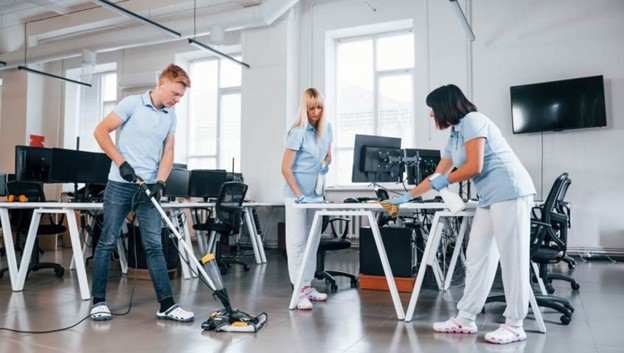Why Regular Maintenance of Workplace Facilities Matter
Being quick to identify and address maintenance issues in an office or work environment are important traits whatever industry you work for. When it comes to facilities management, being proactive and able to adapt and enhance your safety culture is essential.
At times, and despite sound risk assessment and organisation, facility managers can be faced with unpredictable challenges that require urgent or a significant level of attention. In these cases and to mitigate against issues escalating, carrying out comprehensive maintenance checks throughout the year are invaluable.
From potential pest infestations to building vulnerabilities, this article delves into why prompt action and regular maintenance are the solution to creating a safe, healthy, and productive workplace.
Be Aware of Hidden Risks
Modern workplaces, especially those that are located in older buildings or converted spaces can be particularly susceptible to a range of hidden hazards. Businesses tend to focus on the maintenance problems they can see, or those they expect to have, or the ones that are reported to them.
Yet, the hidden challenges are just as likely to compromise and undermine workplace safety, hygiene, and operational efficiency. These risks might also go unnoticed until they develop into significant problems that can impact employee health, workplace infrastructure, and ultimately, business operations.
Older buildings and those situated in urban or rural areas can be more susceptible to attracting certain pests or prone to infestations that can’t go unchecked. Mice, rats, and other small mammals can find their way into workplace environments through surprisingly small openings, creating a host of potential issues:
- Structural Damage: Rodents are notorious for chewing through electrical cables, insulation, and structural materials. A single mouse infestation can lead to thousands of pounds in potential repair costs.
- Health Risks: Wildlife carriers can introduce diseases and parasites into the workplace, posing significant health risks to employees.
- Electrical Hazards: Chewed cables not only represent a maintenance expense but can also create serious fire risks and potential electrical system failures.
Any unwanted guests and especially mice can damage equipment, wiring, cables, pipes and are an unhealthy addition to any working environment as they might defecate and urinate on desktops and accessories. Vermin such as rats and mice prefer warm places so it’s important that any air-conditioning units are installed correctly. These discreet ventilation cavities and other gaps or little-known holes in a commercial building make ideal areas for mice and many other pests to establish themselves and wreak havoc over time.
Prioritise the Health and Safety of Your Workforce
To prioritise the health and safety of your workforce, it’s important to identify other potential hazards that might apply to a work setting. Essentially, prevention is the most effective safeguarding measure you can take as is being aware of any potential unforeseen issues or hazards that may go unchecked within a workplace setting.
While you might have a customised list of health and safety checks to make for your unique facility, having a health and safety policy in place that works in tandem with your checklist of maintenance issues and ongoing repair jobs can be more effective throughout the year. The UK Government’s guidelines are led by the Management of Health and Safety at Work Regulations 1999 with the minimum rules to safeguard employees including:
- what could cause injury or illness in your business (hazards)
- how likely it is that someone could be harmed and how seriously (the risk)
- knowing how to eliminate the hazard, or control the risk
Conduct Regular Maintenance Checks
However, conducting regular maintenance checks that are also known as Planned Preventative Maintenance (PPM) is a proactive approach you can take to maintenance in any commercial or industrial setting. Not only will you be able to identify and address issues before they escalate into worse and more costly problems, you’re effectively future-proofing your workplace and complying with health and safety regulations.
Likewise, consider the frequency of maintenance checks and organise monthly inspections. Conduct a comprehensive walkthrough of all workplace areas or more detailed assessments that can focus on those hidden areas mentioned earlier. In practice, your aim is to avoid any unwanted costs that might be incurred from neglecting maintenance tasks.
Even seemingly minor issues can escalate into major repair projects or disrupt business operations resulting in unsafe or unhygienic workplaces. Similarly, settings that negatively impact staff morale, might create long-term health risks or undermine staff performance. With routine inspections, repairs, and tasks ticked off across your equipment, machinery, and entire facilities, you’ll hopefully prevent failures, avoid costly repair jobs, and boost your overall operational efficiency.



